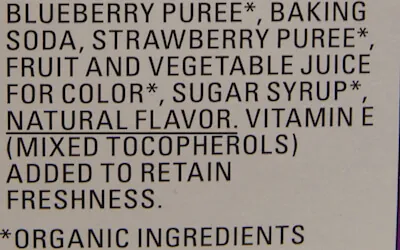Natural Flavors Defined
Updated | 2019-01-16
Reviewed by the NatureClaim Team

The label on a package of food has several pieces of information: (1) nutrition facts, (2) ingredients, (3) allergen information, and (4) if the food has genetically modified organisms (GMOs). A major debate in 2016 was about labeling foods produced with genetic engineering. For some time the European Union had labeled foods containing GMOs and now the US and Canada have followed suit. However, this article is not about GMOs.
The next time you read a label, look again at the ingredients. Natural flavors. What are these natural flavors? With increasing transparency for the foods we eat; for instance, the labeling of foods produced with GMOs, why is the list of natural flavors still unknown. In early January 2014, there was an article published by DailyBurn and later republished by CNN: What Are Natural Flavors, Really? I expected to learn about these elusive natural flavors; however, I left the article more confused than before. How could this be the only news on natural flavors? Nonetheless, after digging around a bit for more information, I was able to find a definition for natural flavors from the FDA:
"The term natural flavor or natural flavoring means the essential oil, oleoresin, essence or extractive, protein hydrolysate, distillate, or any product of roasting, heating or enzymolysis, which has the flavoring constituents derived from a spice, fruit or fruit juice, vegetable or vegetable juice, edible yeast, herb, bark, bud, root, leaf or similar plant material, meat, seafood, poultry, eggs, dairy products, or fermentation products thereof, whose significant function in food is flavoring rather than nutritional."
What does this mean? The keyword here is derived (in bold). A clearer definition of natural flavors should be as follows: mixtures of compounds or a single compound physically or chemically extracted (or derived) from plants or animals that adds flavor rather than nutritional value to food.
In health foods stores, you may have encountered natural flavors in the form of essential oils, which are the most common natural flavors. Coca Cola has natural flavors. Besides the caffeine in Coca Cola, could the natural flavors also be addictive ingredients? One thing we need to realize: natural does not always mean safe. Many natural flavors are extracted with unsafe chemical solvents, but these solvents are usually removed before the natural flavors are added to food. Thus, natural flavors are generally recognized as safe.
Have you ever tried fresh coconut water? The canned and Tetra Pak coconut water sure does not taste the same and listed in the ingredients one can find natural flavors. This off-flavor may be due to unsuccessful extraction of the natural flavors from coconut.
Organic foods also contain natural flavors. According to USDA’s Organic Labeling Standards, food can be considered organic if at least 95% of the ingredients (excluding salt and water) are organic. Therefore, the natural flavors in food with the organic seal may not have been sourced organically.
But what are natural flavors, really, really? Vanillin is a compound extracted from the vanilla beans of a plant in the genus Vanilla. Due to vanillin’s characteristic vanilla aroma and flavor, it is widely used in perfumes and as a natural flavor.
To produce vanilla natural flavor, the beans are first harvested and then allowed to age. The aged beans are ground up and extracted with ethanol (or another solvent depending on the extraction facility). In the ethanol extract, there will be vanillin and other natural flavors.
Yet, determining the natural flavors in Coca Cola and other products may be opening a can of worms. Unless there is more transparency, we may never really know what are natural flavors.
Reference(s):
"Natural Flavors Defined" was written by Korey Brownstein, Ph.D.
